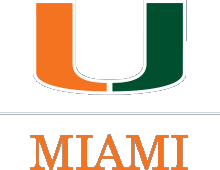



A UM art historian marvels at the distinctive colonial architecture of Cuban churches.
For Karen Mathews, a visit to the La Virgen de la Caridad del Cobre Sanctuary in the Oriente region of Cuba turned into a unique spiritual experience.
“It is otherworldly,” says Mathews, assistant professor of art and art history in the University of Miami’s College of Arts and Sciences. She recently traveled with School of Architecture professors and students to work on a project to document and refurbish a colonial church in the eastern city of Santiago de Cuba. “It is a place of great veneration. It has an amazing aura about it.”
As Matthews looked at the ex-votos, or offerings of gratitude, to the Lady of Charity, the patroness of Cuba, lining the side aisles of the church—pieces of clothing, baseballs and crutches—she realized what a sacred place the sanctuary is.
“Here were all the gifts people had brought to the Virgin for cures or favors she had provided,” Matthews says. “I realized that I was experiencing a medieval tradition that has continued to this day.”
In her ten-day trip, Mathews, a scholar of Spanish, Spanish Colonial and Islamic art, spent days along with UM students and other professors at the Church of Santa Lucia documenting the artifacts, artwork and other structures in the temple, including some pretty interesting aspects of the church.
About the Video
The distinctive architecture of Cuban churches has been studied by scholars. In this time-lapse video made by Amin Sarafraz of UM’s Center for Computational Science, students explore the Church of Santa Lucia in Santiago de Cuba.
Join the Conversation:
Follow on
Twitter:
UM College of Arts and Sciences, @UMCAS
University of
Miami, @univmiami
UM News, @univmiaminews

Santa Lucia, Matthews explained to the students, gouged out her eyes in her devotion to the Lord and depictions of eyes were built somewhere on the building. Fascinated, the group explored the walls and halls of the church in search of the hidden eyes.
During her stay, she also visited eight other colonial churches and marveled at both the similarities and differences that characterized religious architecture in the Americas.
“I was very excited about going to Cuba," she says. “This was an opportunity that could not be passed up.”
During her visit, she noted how Cuban colonial architecture differed from other structures in the Americas as builders adapted techniques to the climate and geology of the island. Some features included the use of entwined branches to line interior walls—called cujes—a tradition that came from Africa, sloped ceilings to allow for rain runoff, and the use of wooden structures covered by masonry to combat the effects of strong earthquakes that are typical in the Oriente region.
The churches also exhibited architectural influences from Spain's multicultural medieval past, including intricately carved wooden ceilings with geometric patterns based on Islamic art forms.
“It was extraordinary to see this,” she says. “Cuba was not marginal at all in the Spanish colonial world. It was an entry point to the colonies and as such was influenced by many traditions and all the diverse groups that visited this early colonial capital and port city.”
- BARBARA GUTIERREZ / UM News
